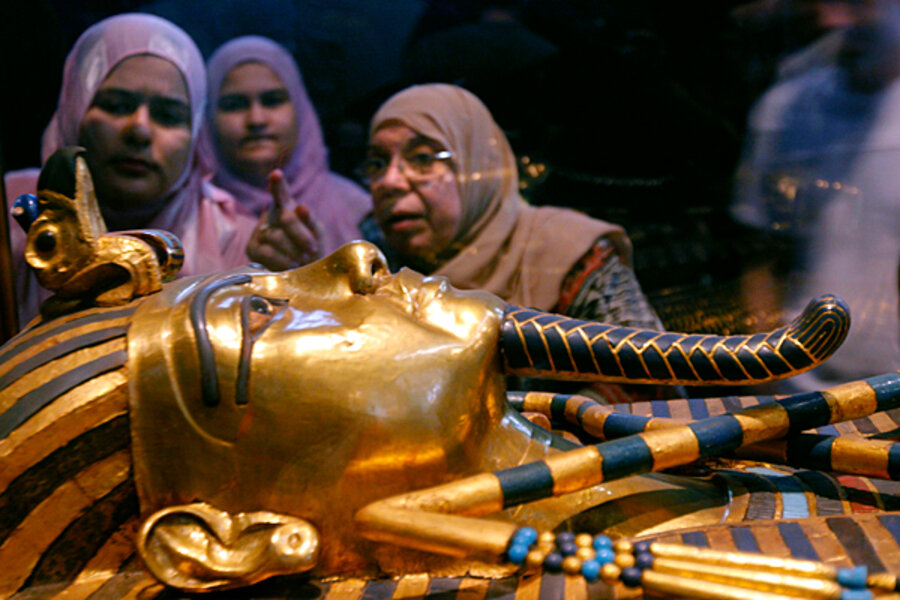King Tut DNA testing sheds light on how he lived and died
Loading...
| Cairo
The results of a study on the mummy of King Tutankhamun, Egypt’s golden-boy pharaoh, released in Cairo this week appeared to disprove the popular theory that King Tut was murdered.
Instead, researchers said, their tests showed King Tut died at age 19 due to a combination of bad genes, bad bones and a bad case of malaria.
The two-year study was the first to use advanced radiological and genetic testing techniques on mummies, originally thought impossible due to their age and the techniques used to preserve the bodies. The team of Egyptian and foreign scientists led by Zahi Hawass, secretary general of the Egyptian Supreme Council of Antiquities, extracted DNA from the bones of eleven mummies and published their findings in the Journal of the American Medical Association on Wednesday.
“This is the first time somebody did something like this with pharaohnic DNA,” says Carsten Pusch associate professor at the Institute of Human Genetics at the University of Tübingen in Germany, who worked on the study. “We have shown it is possible to work with the DNA [of mummies] and now we have opened a new door. Behind the door, there’s a new universe waiting for us.”
Using CAT scans and DNA analysis the study found the boy-pharaoh, who died in the ninth year of his reign in 1324 BC, had a cleft palette, a club foot, avascular bone necrosis in his left foot (a disease that prevents adequate blood flow to the bone), and walked with a cane as a result – explaining the approximately 130 walking sticks found in Tut’s tomb, discovered by British archeologist Howard Carter in 1928.
DNA testing pointed to incestuous parentage as at the root of Tut’s health woes. The study concluded his father was the controversial King Akhenaten, who attempted to bring monotheism to ancient Egypt, while Tut’s mother was Akhenaten’s sister, whose name remains unknown. Incest was normal in ancient Egypt, but often led to chronic health problems in the ruling families.
Hawass declares cause of death
“Now we can finally answer the question of how King Tut died,” said Hawass. “King Tut had severe malaria.” Testing also showed one of the two fetuses found in Tut’s tomb was his 9-month-old daughter.
Ancient DNA research is not just being done in Egypt. Last week, scientists using similar methods announced they had sequenced the DNA of "Inuk" a 4,000-year-old man who lived in what is now Greenland and found his ancestors had traveled there from Siberia.
“With the methods 10, 15 years ago, it would be impossible to do this kind of research,” says Dr. Pusch, who notes the superiority of man-made enzymes today allowed these studies to move forward. “It’s just some kind of cooking in the lab, but you need many, many ingredients, and these ingredients are of perfect high quality now.”
Despite new technology, scientists were not sure the mummification process would preserve DNA well enough to test. “It is very important to see if it is generally possible to work with old specimens that have been embalmed – this is completely different from specimens that have been buried in the soil or frozen in the ice – with this study we have shown it is possible,” says Pusch.
Could a pharaoh be cloned? “It was shown it was possible for the Neanderthal, and the Neanderthal is even older, so it should be possible with these,” he says.





